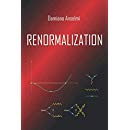Consider an action $S$ depending on fields $\phi_{i}$, where the index $i$ labels both the field type, the component and the spacetime point. Add a term quadratically proportional to the field equations $S_{i}\equiv \delta S/\delta \phi _{i}$ and define the modified action
\begin{equation}
\phantom{(1)}\qquad\qquad\qquad S^{\prime }(\phi _{i})=S(\phi _{i})+S_{i}F_{ij}S_{j}, \qquad\qquad\qquad (1)
\end{equation}
where $F_{ij}$ is symmetric and can contain derivatives acting to its left and to its right. Summation over repeated indices (including the integrationover spacetime points) is understood. Then there exists a field redefinition
\begin{equation}
\phantom{(1)}\qquad\qquad\qquad\phi _{i}^{\prime }=\phi _{i}+\Delta _{ij}S_{j}, \qquad\qquad\qquad (2)
\end{equation}
with $\Delta _{ij}$ symmetric, such that, perturbatively in $F$ and to all orders in powers of $F$,
\begin{equation}
\phantom{(1)}\qquad\qquad\qquad S^{\prime }(\phi _{i})=S(\phi _{i}^{\prime }). \qquad\qquad\qquad (3)
\end{equation}
Proof
The condition (3) can be written as
\begin{eqnarray}
&S(\phi _{i})+S_{i}F_{ij}S_{j}=S(\phi _{i}+\Delta _{ij}S_{j})=
\\ &\qquad\qquad\qquad=S(\phi_{i})+\sum_{n=1}^{\infty }\frac{1}{n!}S_{k_{1}\cdots
k_{n}}\prod_{l=1}^{n}(\Delta _{k_{l}m_{l}}S_{m_{l}}),
\end{eqnarray}
after a Taylor expansion, where $S_{k_{1}\cdots k_{n}}\equiv \delta^{n}S/(\delta \phi _{k_{1}}\cdots \delta \phi _{k_{n}})$. This equality is verified if
\begin{equation}
\phantom{(1)}\qquad\Delta _{ij}=F_{ij}-\Delta _{ik_{1}}\left[ \sum_{n=2}^{\infty }\frac{1}{n!} S_{k_{1}k_{2}k_{3}\cdots k_{n}}\prod_{l=3}^{n}(\Delta
_{k_{l}m_{l}}S_{m_{l}})\right] \Delta _{k_{2}j}, \qquad (4)
\end{equation}
where the product is meant to be equal to unity when $n=2$. Equation (4) can be solved recursively for $\Delta $ in powers of $F$. $\Box$
The first terms of the solution are
\begin{equation}
\phantom{(1)}\qquad\qquad\qquad \Delta _{ij}=F_{ij}-\frac{1}{2}F_{ik_{1}}S_{k_{1}k_{2}}F_{k_{2}j}+\cdots
\qquad\qquad\qquad (5)
\end{equation}
The theorem is very general. It works both for local and non-local theories. If $S(\phi _{i})$ and $F_{ij}$ are perturbatively local, namely they can be perturbatively expanded so that every order of the expansion is local, the field redefinition (2) and the action $S^{\prime }(\phi _{i})$ are perturbatively local. If both $S(\phi _{i})$ and $F_{ij}$ are local, in general (2) and $S^{\prime }(\phi _{i})$ are only perturbatively local. Actually, the resummation of the expansion can produce a non-local field redefinition. Finally, if $S(\phi _{i})$ and $F_{ij}$ are local or perturbatively local at the classical level, then (2) and $S^{\prime }(\phi _{i})$ are perturbatively local at the classical level.
This theorem was proved in
D. Anselmi, Renormalization and causality violations in classical gravity coupled with quantum matter,
06A1 Renorm
JHEP 0701 (2007) 062 | DOI: 10.1088/1126-6708/2007/01/062
and arXiv:hep-th/0605205.
A known situation where the theorem applies is the three-dimensional $U(1)$ gauge theory. The field equations of the Chern-Simons action
\[
S(A)=\frac{1}{2\bar{\alpha}}\int \varepsilon ^{\mu \nu \rho }F_{\mu
\nu }A_{\rho }
\]
are $F^{\mu \nu }=0$, so there exists a field redefinition $A_{\mu }^{\prime
}(A,\alpha /\bar{\alpha})$ such that
\begin{equation}
S^{\prime }(A)=S(A^{\prime }), \label{abi}
\end{equation}
where $S^{\prime }$ is the sum of the Chern-Simons action plus the square of the field strength,
\[
S^{\prime }(A)=\frac{1}{\bar{\alpha}}\int \varepsilon ^{\mu \nu
\rho }F_{\mu \nu }A_{\rho }-\frac{1}{4\alpha }\int F_{\mu \nu }F^{\mu \nu }.
\]
In pure gravity, the theorem just proved ensures that there exists a field redefinition that maps a class of higher-derivative theories into the Einstein theory. For example, there exists a field redefinition $g\rightarrow g^{\prime }(g,a,b)$ such that
\begin{equation}
S_{\text{HD}}(g)=S_{\text{E}}(g^{\prime }),
\end{equation}
where
\begin{eqnarray}
S_{\text{HD}}(g) &=&\frac{1}{2\kappa ^{2}}\int \sqrt{-g}\left( R(g)+aR_{\mu
\nu }R^{\mu \nu }(g)+bR^{2}(g)\right) , \\
S_{\text{E}}(g) &=&\frac{1}{2\kappa ^{2}}\int \sqrt{-g}R(g)
\end{eqnarray}
Indeed, the terms $R_{\mu \nu }R^{\mu \nu }$ and $R^{2}$ are quadratically proportional to the field equations of the action $S_{\text{E}}(g)$. The lowest-order contributions to the map are, from (2) and (5),
\begin{equation}
g_{\mu \nu }^{\prime }(g,a,b)=g_{\mu \nu }-aR_{\mu \nu }+\frac{1}{2}%
(a+2b)g_{\mu \nu }R+\mathcal{O}(a^{2},b^{2},ab).
\end{equation}

 Quantum Gravity
Quantum Gravity 


